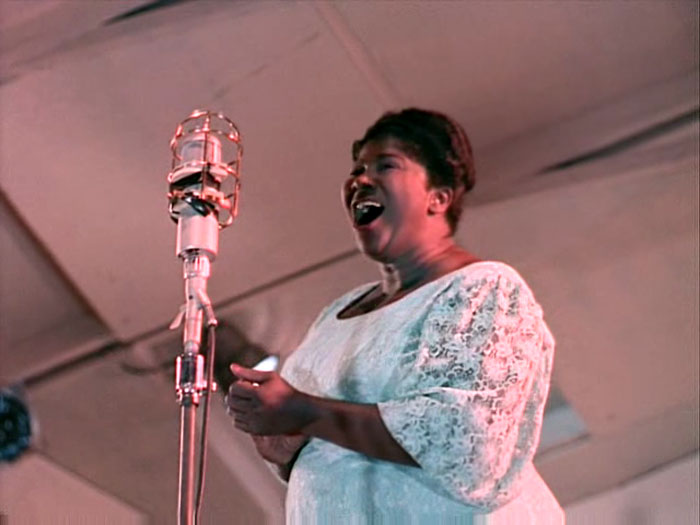
Directed by Aram Avakian and Bert Stern
35 mm color film
85 minutes
Galaxy Productions
Jazz on a Summer’s Day documents the Newport Jazz Festival of 1958. It contains some of the greatest American performance footage of the period, by such esteemed artists as Chico Hamilton, Eric Dolphy, Dinah Washington, Mahalia Jackson, Big Maybelle, Chuck Berry, Thelonious Monk, and Louis Armstrong. It stands in contrast to most other mainstream films with black entertainers, where the imperatives of racism and segregation—and the need to appease southern white audiences—greatly diminished their complexity and humanity.
In most early black musical films, stars such as Louis Armstrong, Hazel Scott, and Lena Horne portrayed characters who were peripheral to or unimportant in the society and culture at large. Well before and during the civil rights movement, African Americans were filling the seats of movie theaters, longing for those brief glances of performers they understood to represent the best of their people’s accomplishments, but with little chance to see them in a natural or real-world context.
Jazz on a Summer’s Day—which chronicles the festival against an artful backdrop of seagulls, yachts, and young white folks enjoying the music—is perhaps as close as black people could come at the time to a feature-length film completely reflecting the gravity and diversity of the African American cultural experience. The festival’s organizers, the interracial couple George and Joyce Wein, helped rewrite the racial history of this country by providing an opportunity for musicians of all races to mingle and play together on an American stage, yet in a place remote enough to escape the notice of segregationists and racists. Jazz on a Summer’s Day is indispensable for any fan of African American music, particularly jazz or gospel.
Michele Wallace